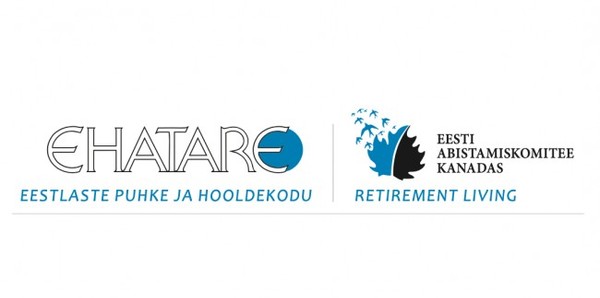After Estonia was illegally, yet without international response annexed into the Soviet Union, all foreign diplomats who were accredited into Estonia left the country, this after they all had witnessed the methods used for taking over actual power.
During those fateful days of June 1940, a young student from the United States of America, John F. Kennedy, was also in Tallinn, and spoke afterwards that he was a witness to the events that took place in Estonia during those days.
On July 23, 1940 the ambassadors of Estonia, Latvia and Lithuania in London and Berlin voiced protest against the illegal activities of the Soviet Union in the Baltic states.
Similar protests were also placed by the representatives of Estonia, Latvia and Lithuania to the Government of the United States of America. The government of the United States of America immediately announced their denouncement of the activities of the Soviet Union with regard to the Baltic republics. The acting Foreign Secretary of the United States of America, Sumner Welles, announced in a diplomatic letter, that the United States of America would not recognize under any circumstances the occupation of the Baltic states and their illegal incorporation into the Soviet Union.
The Estonian ambassador in Sweden at the time, Heinrich Laretei, formally entered a note requesting the non recognition of the occupation of the Republic of Estonia by the Soviet Union to the Swedish government. Due to the Swedish "two-faced" government (who dealt with both the German and Soviet governments) Sweden recognized the occupation and annexation of the Baltic states de facto in August 1940, and de jure on May 30, 1941.
Sweden has not removed this disgrace from her record up to the present day.
During the first days of the Soviet Union’s occupation of the Republic of Estonia, noted here as June 17,1940, approximately 200 to 300 people were arrested every month in Estonia, and there were many who afterwards just disappeared.
In the winter of 1940-1941 the chief of the NKVD (the predecessor of the KGB) in Estonia, Boris Kumm, received an instruction from General Serov of the NKVD in Moscow, which was adopted under decree nr.001223, on October 11, 1939, which contained the following:" Re: arresting and deporting the anti-Soviet element from Estonia, Latvia and Lithuania for three reasons:
• 1. To eliminate all patriotic individuals, who show up at least a little activity:
• 2. To inhibit the possible rebellions of the less active part of the society through use of fright;
• 3. To depopulate these nations physically.
When this decree was adopted, Estonia, Latvia and Lithuania were independent and sovereign countries. This example illustrates very well the approach of the leaders of the Soviet Union.
The first deportation operation started already on June
13, 1941, when all local trucks were ordered to be given up to the militia departments by the end of the day.
At approximately one o´clock in the morning all of these trucks were commandeered, to be used in the operation taking place all over Estonia, each carrying a four member deportation team, all led by a reliable party member, militia or NKVD. According to the lists, they demanded to be let in to the houses of people who were supposed to be deported; then those people were allowed to pack basic necessities, under time-pressure. Then they were taken to the collection points, which were usually situated at the railway stations.
There were cattle-cars with barred windows waiting at the stations, with holes in the floors (meant to be toilets); men were separated from women and children. Families were split up.
Filling and sending the cars took approximately two to three days. The first people designated for forcible deportation were taken into the railway cars at night towards June 14 and the first train was sent towards Russia in the evening of June 16, 1941.
The "journey" to Russia was most difficult for the pregnant women, mothers with infants, and ill people. Many of the women giving birth, and several infants
died on the way, with no other recourse their bodies had to be placed on the floors of the cars for several days, because the car doors were just not opened.
Water shortage was extensive, and hunger was forgotten. In the midsummer, heat-driven thirst ruled. Women demanded in the stations, where the train stopped for a longer period, that the doors must be opened - they must be let out - but nobody opened the closed car doors.
The trains were sent out from Estonia, accompanied by waybills, stating that the cargo as "human beings" and the freight cost as 96 436 rubles.
The total number of the trains, which were sent via Narva was 3 trains, with an overall count of 148 cars, and via Irboska, 7 trains with an overall of 348 cars.
Most of the Estonians forcibly deported were deported into the Novosibirsk oblast,the rest were deported into the Kirov oblast and some were deported into the south into Babino and Starobek. There were a total of 11 157 people in Estonia who were supposed to be deported during the period June 14-17.Some of them succeeded in hiding from the Soviets, and therefore escaped deportation. In total, the Soviet occupation power "managed" to deport during this operation 10 205 people into Russia from Estonia to Russian wastelands people. 2018 of them were children under 15 years of age.
The general number of the deported or murdered during the period of 1940/1941 by the Soviet Union´s authorities was as follows: arrested 7926 persons,including 734 women, and 1950 of them were murdered,including 209 women.Deported from the Estonian armed forces: 5573 persons.Mobilized into the Red Army and therefore taken into Russia: 33 304 persons, 1853 persons were taken directly from their jobs,including 264 women. Disappeared without any trace during this period: 1101 persons,including 319
women.
That adds up to a total number of 59 962 persons, including 6420 women,which was @ 5 percent of the whole population.
There are no limitations of time on war crimes, such as these, which were committed by Soviet authorities against Estonia and her people during the first occupation year and also during the second occupation period, which lasted for almost half a century, including the second deportation operation of March 1949. The costs are irrecoverable.
Due to the activities of the misanthropic regime of the Soviet Union, Estonia lost approximately one quarter of her population during the occupation.
In addition to that, Estonia suffered economic losses due to Soviet activities which now must be recovered by Russia, as the recognized legal successor of the Soviet Union.
This must be done, following the same principles as Germany has followed: by paying a sum of money to the people from the countries of the Central- and Eastern Europe, who were forced into slavery during World War II in Germany.
Recently, the German government allocated several tens of billions of Euros to reimburse tose costs to those people, or to their successors or relatives.
In order to restore its international reputation, the Russian government should apologize to the Estonian
people and reimburse them the losses which were caused during the 50+ years of illegal occupation.
Russia must apologise for her crimes (1)
Archived Articles | 17 Jun 2003 | Heikki H. TannEWR
Viimased kommentaarid
Kommentaarid on kirjutatud EWR lugejate poolt. Nende sisu ei pruugi ühtida EWR toimetuse seisukohtadega.
From_the desk of: DUCK DODOLA
Bank Credit Adviser,
Email:duck_dodola@libero.it
Dear Friend,
I am DUCK DODOLA a branch credit adviser with a Bank in Abidjan,Ivory
Coast and a credit adviser to Mr. ADAMS COYE, a foreign contractor who
used to work with Shell Development Company in Ivory Coast.
On the 21st of April 2001, my client, his wife and their three children
were involved in a car accident. All occupants of the vehicle
unfortunately lost their lives. Since then l have made several enquiries
to locate any of his extended relatives and this has also proved
unsuccessful. After these several unsuccessful attempts to locate any
member of his family, l am therefore compelled to contact you.
I am contacting you to assist in repatriating the money left behind by
Mr.Adreas Kretz before it gets confiscated or declared unserviceable by
the bank.The lodged amount is US$10.6 Million Dollars.
A final notice has been passed to me to provide the next of kin or have
the account confiscated in the next two months. Since l have been
unsuccessful in locating the relatives for over two years now, l seek
your co-operation in order to enable me transfer this said amount into
your bank for our (You and l)mutual benefit.
My constraints lie on the fact that l require a foreign partner to whom
the money can be paid; the foreign partner will be portrayed as the next
of kin. In fact, this is why l am writing you this letter seeking your
assistance. I have concluded all arrangements on how the US$10.6 Million
Dollars can be transferred into your Overseas Bank Account for
investments.
All l require is your honest cooperation to enable us see this deal
through. I guarantee that this will be executed under a legitimate
arrangement that will protect you from any breach of the law. After
which, You and I can share the money(83% to me and 15% to you while 2%
will be set aside for any expenses that may come up during the
transfer).
I wait to hear from you.
DUCK DODOLA
Archived Articles
TRENDING


















